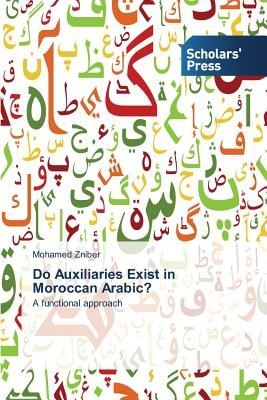
- We will send in 10–14 business days.
- Author: Zniber Mohamed
- Publisher: Scholars' Press
- Year: 2015
- Pages: 264
- ISBN-10: 3639761790
- ISBN-13: 9783639761795
- Format: 15.2 x 22.9 x 1.5 cm, softcover
- Language: English
- SAVE -10% with code: EXTRA
Reviews
Description
Verb +Verb structures in Moroccan Arabic (MA), beyond Kun "be", &adi (future modality), b&a/ba "want", etc., display various degrees of formal freezing and semantic transfer and/or loss of notional "substance", that leave little doubt about their auxiliating function. What looks like a genuine grammaticalization, therefore, warrants all the more a re-evaluation of the patterning and functions of these constructions (composed of two or more successive verb phrases within single clauses), as Auxiliaries (Aux) constitute one of the grammatical categories in which the action of the dynamic synchrony is actively at work, renovating he collocational/colligational patterns and lexical stock of the language. The M.A. Aux are not directly involved in the making of "compound tenses" as this is the case, for example, with English be and have or French être and avoir used respectively for the passive and the perfect). Referred to sometimes as Semi- auxiliaries (S-Aux) -and again, unlike English or French in which the number of Aux has been circumscribed long ago and their patterning clearly defined-, MA candidate forms display idiosyncratic, morphological and syntactic features.
EXTRA 10 % discount with code: EXTRA
The promotion ends in 18d.02:04:57
The discount code is valid when purchasing from 10 €. Discounts do not stack.
- Author: Zniber Mohamed
- Publisher: Scholars' Press
- Year: 2015
- Pages: 264
- ISBN-10: 3639761790
- ISBN-13: 9783639761795
- Format: 15.2 x 22.9 x 1.5 cm, softcover
- Language: English English
Verb +Verb structures in Moroccan Arabic (MA), beyond Kun "be", &adi (future modality), b&a/ba "want", etc., display various degrees of formal freezing and semantic transfer and/or loss of notional "substance", that leave little doubt about their auxiliating function. What looks like a genuine grammaticalization, therefore, warrants all the more a re-evaluation of the patterning and functions of these constructions (composed of two or more successive verb phrases within single clauses), as Auxiliaries (Aux) constitute one of the grammatical categories in which the action of the dynamic synchrony is actively at work, renovating he collocational/colligational patterns and lexical stock of the language. The M.A. Aux are not directly involved in the making of "compound tenses" as this is the case, for example, with English be and have or French être and avoir used respectively for the passive and the perfect). Referred to sometimes as Semi- auxiliaries (S-Aux) -and again, unlike English or French in which the number of Aux has been circumscribed long ago and their patterning clearly defined-, MA candidate forms display idiosyncratic, morphological and syntactic features.


Reviews